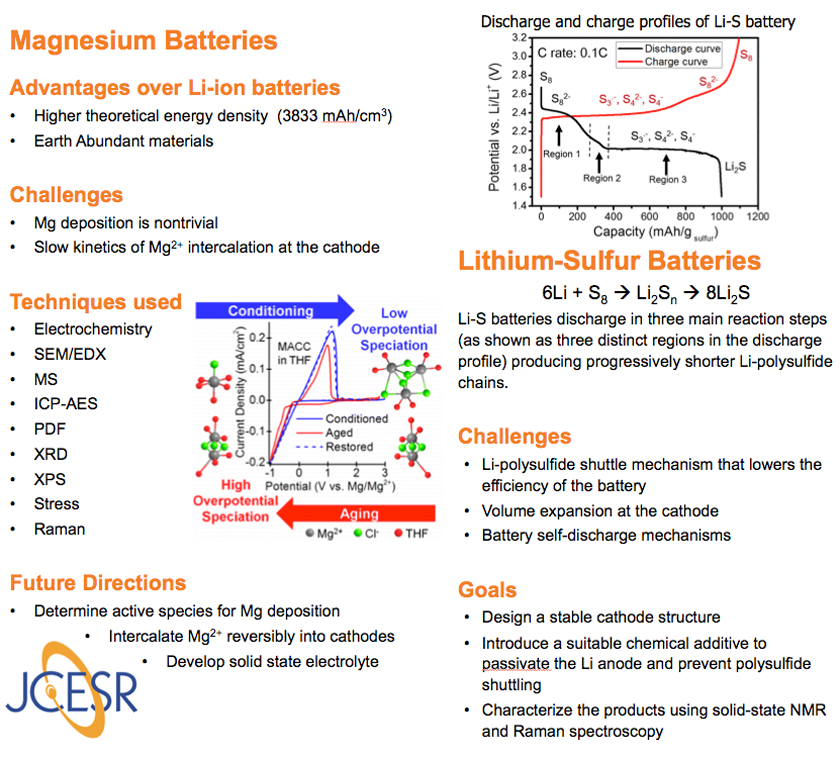Research
Projects in this group focus on several themes related to structure and reactivity at interfaces, especially those immersed in solution. These projects are directed at addressing fundamental questions related to energy and environmental issues. We examine and develop new catalysts for small molecule reactivity related to remediation and energy production, particularly oxygen reduction and carbon dioxide conversion. We study the structure of the electrochemical double layer and the structure of solvents at surfaces. Another group of projects focuses on interrogating the reactivity of Li ion batteries and seeks to develop new cathode and anode materials for these devices. We also study new, alternative batteries such as those based on magnesium and lithium-sulfur.
Students working in this group have the opportunity to use sophisticated instrumentation appropriate to interrogate interfaces. In addition to variable temperature probe microscopy (STM, AFM) in a variety of environments, we utilize vibrational spectroscopy (reflectance IR, surface enhanced Raman spectroscopy), a infrared-visible SFG instrument operational in MRL, and more traditional electrochemical methods. We also use a full suite of characterization tools such as photoemission spectroscopy, TEM and SEM, and use synchrotron radiation to scatter X-rays both in and out of plane from these materials. Computational efforts also provide complementary insight into surface electronic structure.
O2 Reduction Electrocatalysis
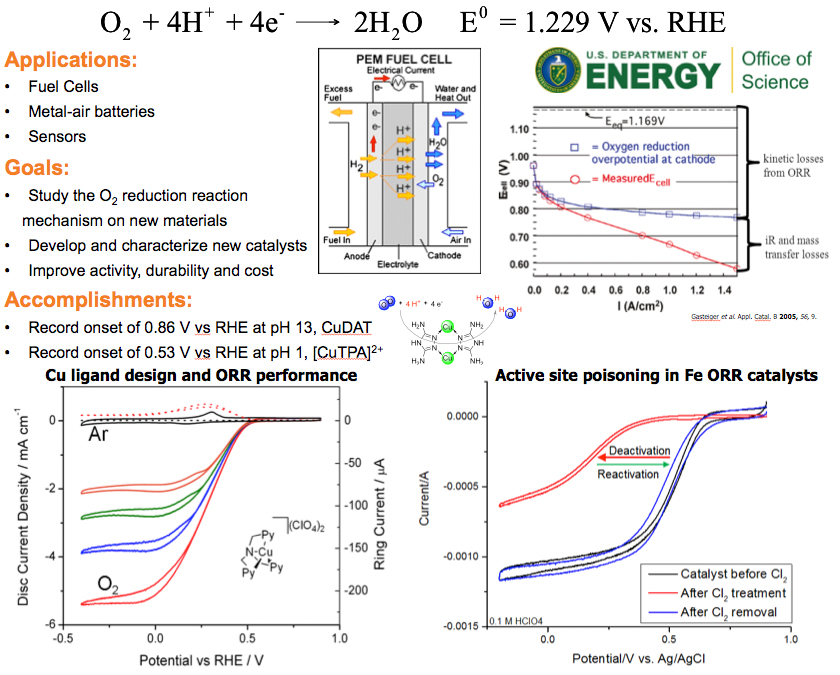
Molecular Structure at Electrified Interfaces
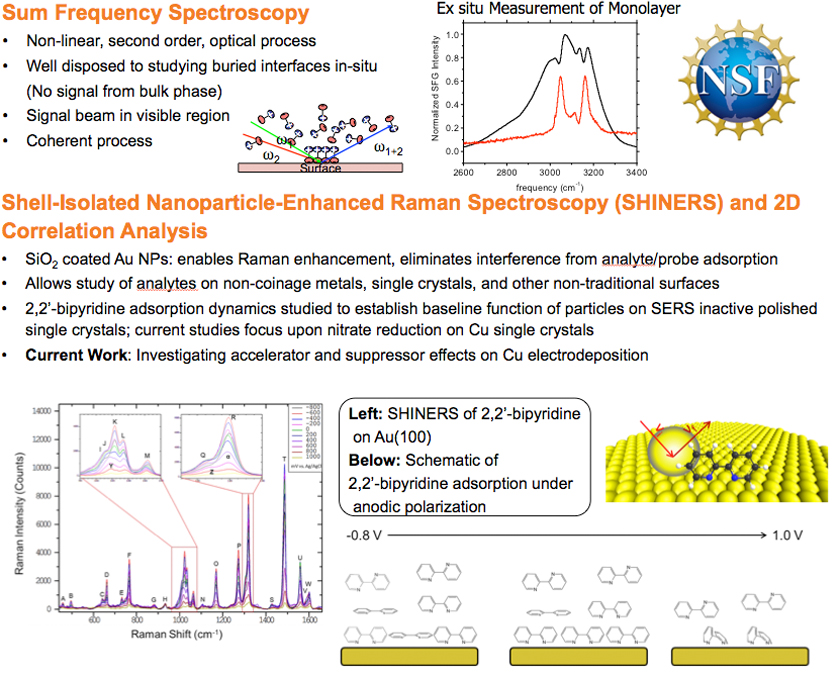
Electrochemical CO2 Conversion
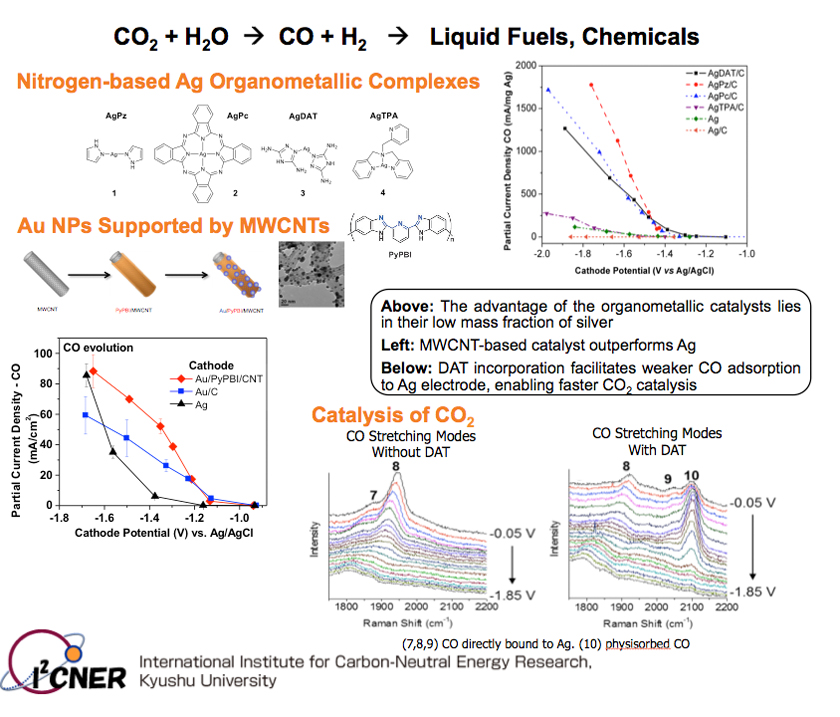
Electrochemical Energy Storage: Li Based Batteries
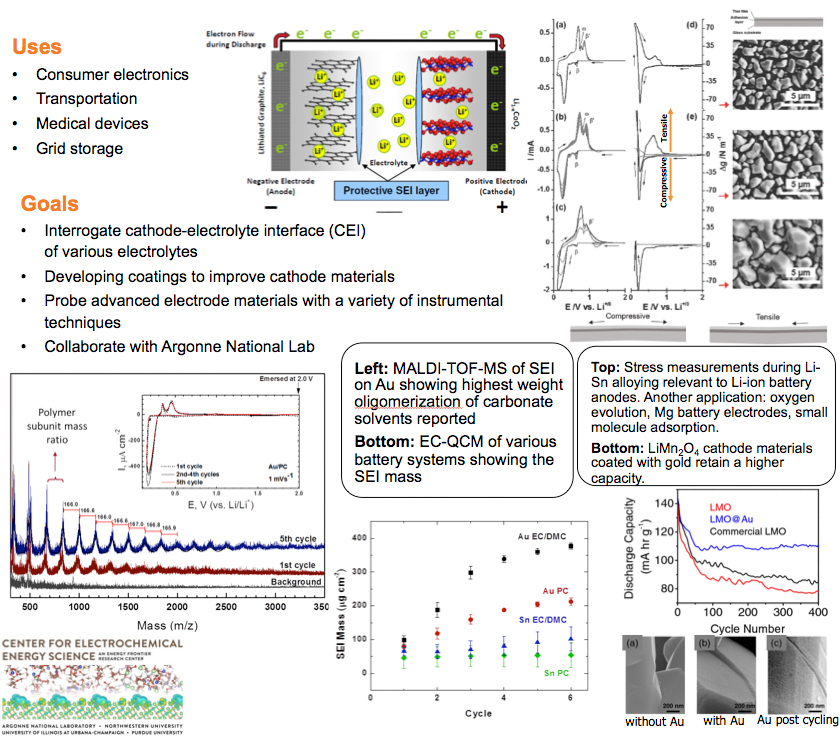
Next Generation Batteries
